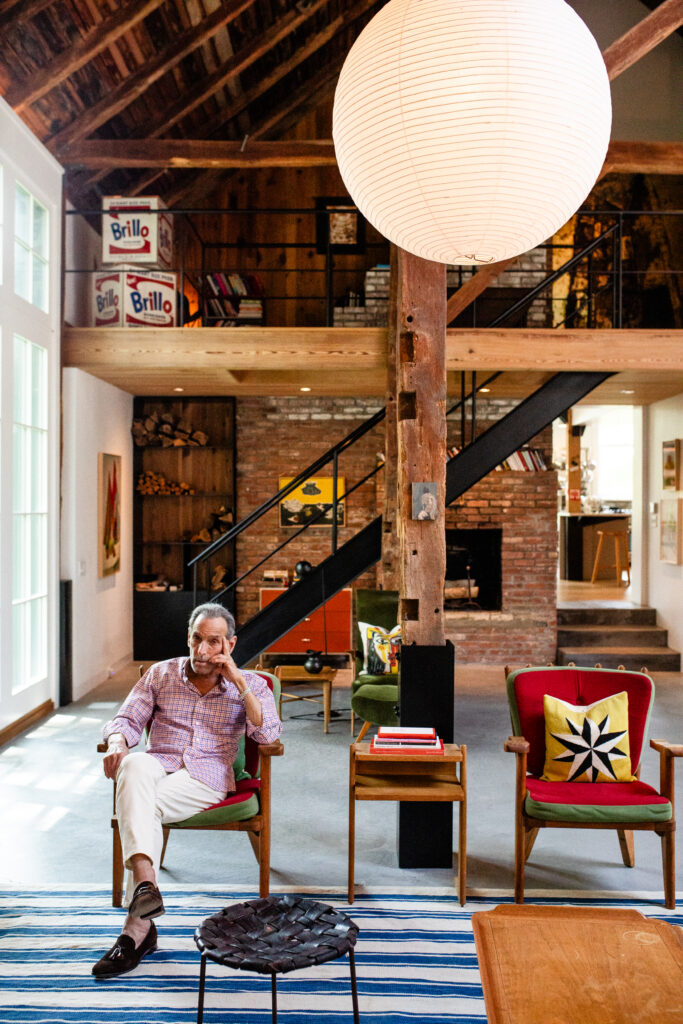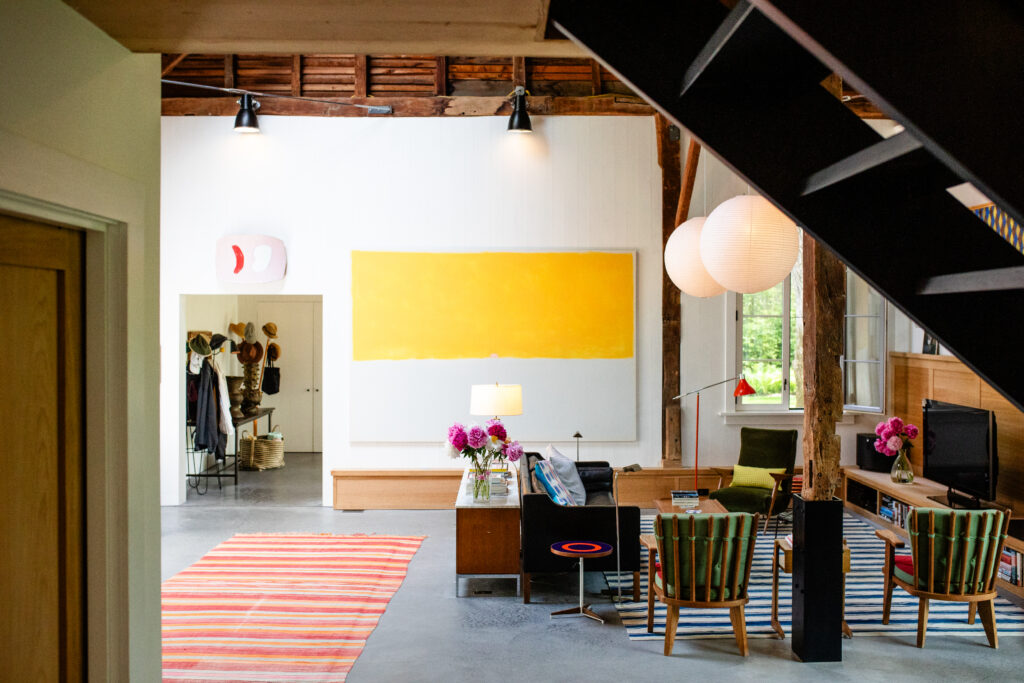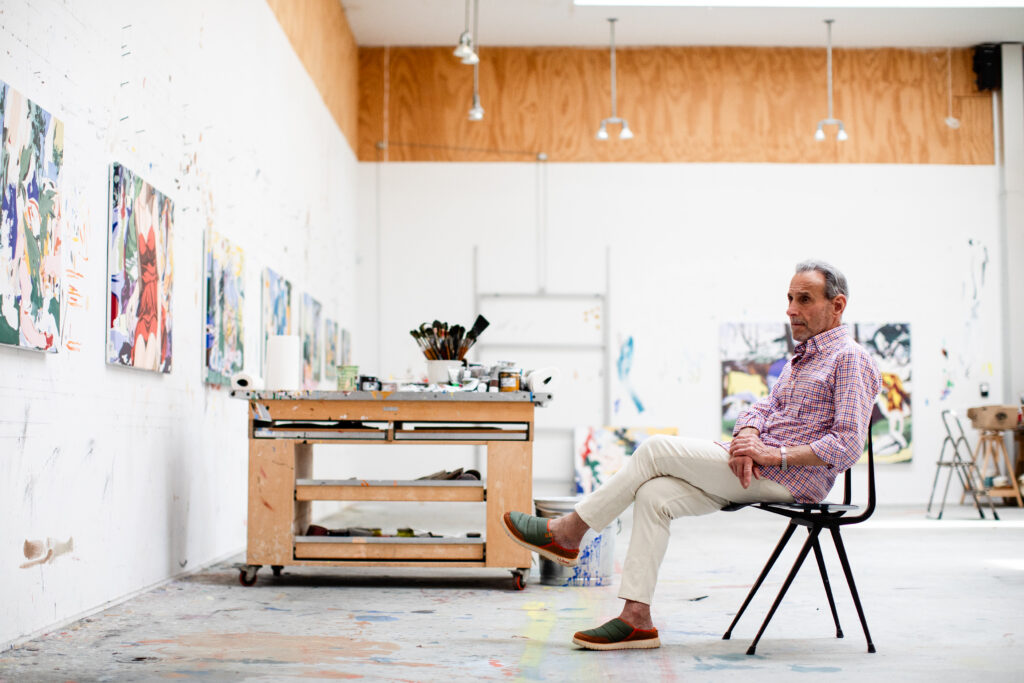
There are Hamptons artists, and then there is David Salle. The renowned Neo-Expressionist’s presence on the East End affirms the region’s place on today’s art history map, much like the titans of Abstract Expressionism did in the last century. For 40-plus years, Salle has been known for richly collaged mash-ups of high-low imagery that interweave pop culture references, cartoons, interior decor, print media, television iconography, and art masterpieces to capture the essence of Postmodernism and the contemporary. Recently, Salle added another element to this mélange, using machine learning to reinterpret his own canvases. This summer, as part of the ongoing exhibition “David Salle: Under One Roof” at Seoul’s Storage by Hyundai Card space, the artist debuts “Windows,” a new series of paintings, as well as a survey of older works from the ’90s and early aughts.
For decades, Salle has split studio time between New York and the South Fork. Last month, CULTURED’s Hamptons editor sat down with the luminary to discuss his exhibition in Korea, the East End art scene, and the 18th- and 19th-century barns that make up his quietly eclectic East Hampton lifestyle.
CULTURED: What is the relationship between your new “Windows” series, on view until Sept. 7 in Seoul, and your “Tree of Life” series?
David Salle: The “Windows” paintings are based on an idea I originally had for a digital game, in which characters that originated in my “Tree of Life” paintings migrated into apartment building windows. The idea is simple: You’re walking down the street and look up at an apartment building. You notice someone in the window—on the phone, or smoking a cigarette, or having a private thought. We’ve all had that fleeting, voyeuristic glimpse into
another life. It’s a hallmark of the urban experience. I took it one step further and placed the “Tree of Life” characters in front of imagistic backgrounds, as if the character is standing in front of a painting—that painting being a detail from a work of mine. I went through 40 years of my paintings and selected details that could function in this compressed way.

CULTURED: When did you discover the Hamptons?
Salle: I visited for the first time in the summer of 1976. I came because Paul Brach—who had been the dean at CalArts, where I went to school—owned a modest 19th-century carriage house right on Montauk Highway, not far from where I am now. The grand house to which the carriage house had originally belonged was called “The Creeks.” In the ’50s, it was owned by the assemblage-ist, surrealist painter Alfonso Ossorio, who was the heir to a sugarcane fortune. He was also a great collector, the biggest collector of Jackson Pollock’s work at that time. To put this in context, Pollock was on his way to Ossorio’s house when he had his fatal car crash. That first weekend I came to the Hamptons, Paul took me to the Green River Cemetery in Springs to visit Pollock’s grave. From the beginning, I was inculcated with the history of this place as it had developed during the first and second generations of Abstract Expressionist painters.
CULTURED: How do you describe the style of your home?
Salle: I think many artists have a strong sense of the things in a room—what they signify, what vibrations they give off, how they work together. This house has evolved with time. There’s pleasure in exercising a sense of juxtaposition and counterpoint. It’s like composing a picture: If done successfully, the composite gives off a little charge every time you look at it.

CULTURED: Which of the artworks in your home holds the most meaning for you?
Salle: I have several works by my teacher, William Dickerson, from when I was growing up in Kansas. I started working with him when I was 9 years old. He was part of a generation of American realists and regional artists who flourished in the 1930s and ’40s. As a watercolorist, I think he’s as good as Edward Hopper. I love living with Bill’s work; it’s a concrete reminder of the aesthetic principles that I absorbed early on. I also have paintings by Charline von Heyl, Joe Bradley, Ross Bleckner, and Alex Katz, all of whom are good friends of mine. The art I live with is quite diverse. To use a musical analogy, everything strikes a particular note, and the notes together form a chord.
CULTURED: What is life in the Hamptons like now compared to your early days here?
Salle: When I first started coming out here, it was, of course, much less developed. Even though it’s changed a lot, those early impressions inform how I feel about it now. I still have a lot of artist friends here; we do our work and try to steer clear of the obvious nonsense. It’s still a beautiful place. I don’t feel a gravitational pull to be anywhere else during the summer.










 in your life?
in your life?

